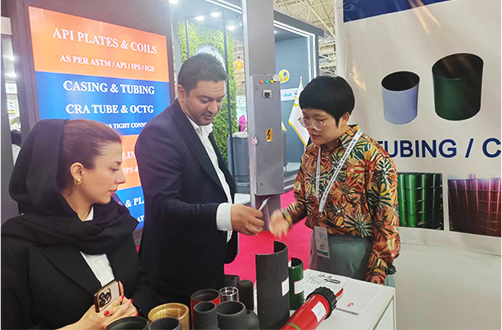- Afrikaans
- Albanian
- Amharic
- Arabic
- Armenian
- Azerbaijani
- Basque
- Belarusian
- Bengali
- Bosnian
- Bulgarian
- Catalan
- Cebuano
- Corsican
- Croatian
- Czech
- Danish
- Dutch
- English
- Esperanto
- Estonian
- Finnish
- French
- Frisian
- Galician
- Georgian
- German
- Greek
- Gujarati
- Haitian Creole
- hausa
- hawaiian
- Hebrew
- Hindi
- Miao
- Hungarian
- Icelandic
- igbo
- Indonesian
- irish
- Italian
- Japanese
- Javanese
- Kannada
- kazakh
- Khmer
- Rwandese
- Korean
- Kurdish
- Kyrgyz
- Lao
- Latin
- Latvian
- Lithuanian
- Luxembourgish
- Macedonian
- Malgashi
- Malay
- Malayalam
- Maltese
- Maori
- Marathi
- Mongolian
- Myanmar
- Nepali
- Norwegian
- Norwegian
- Occitan
- Pashto
- Persian
- Polish
- Portuguese
- Punjabi
- Romanian
- Russian
- Samoan
- Scottish Gaelic
- Serbian
- Sesotho
- Shona
- Sindhi
- Sinhala
- Slovak
- Slovenian
- Somali
- Spanish
- Sundanese
- Swahili
- Swedish
- Tagalog
- Tajik
- Tamil
- Tatar
- Telugu
- Thai
- Turkish
- Turkmen
- Ukrainian
- Urdu
- Uighur
- Uzbek
- Vietnamese
- Welsh
- Bantu
- Yiddish
- Yoruba
- Zulu
petroleum tubing coupling
Understanding Petroleum Tubing Couplings A Key Component in Oil and Gas Extraction
In the oil and gas industry, efficiency and reliability are paramount, especially when it comes to the extraction process. One of the critical components that ensure smooth operations is petroleum tubing coupling. These couplings play a crucial role in connecting various segments of tubing, providing durability, strength, and resistance to the harsh environments often encountered in drilling operations.
The Basics of Tubing and Coupling
Petroleum tubing refers to the pipes that are used to transport oil and gas from the wellbore to the surface. These pipes come in various sizes and grades, depending on the specific demands of the extraction site. The couplings, on the other hand, are the fittings that join these segments of tubing. They are designed to bear the high pressures and stresses that occur during oil and gas production.
Material Considerations
The materials used for manufacturing tubing couplings are crucial. Most couplings are made from steel alloys that offer high tensile strength and corrosion resistance. The selection of materials often depends on the corrosive nature of the medium being transported and the environmental conditions such as temperature and pressure. For instance, sour service conditions, which involve hydrogen sulfide, require specific alloy materials to prevent sulfide stress cracking.
Types of Couplings
There are several types of tubing couplings, each designed for specific applications. The most common types include
1. API Couplings These are standardized couplings regulated by the American Petroleum Institute (API). They are widely used due to their reliability and the assurance of quality they provide.
2. Flanged Couplings These couplings utilize a flange connection, allowing for a more robust connection method. They are often used in situations where maintenance and disconnection might be necessary.
petroleum tubing coupling

3. Threaded Couplings These utilize threaded ends to connect sections of tubing. They are valued for their ease of installation and can provide a strong seal, although they can be more susceptible to wear and tear over time.
4. Welded Couplings In situations that require a permanent connection, welded couplings may be used. These provide excellent strength and are less likely to experience leaks, but they are also much harder to separate when maintenance is needed.
Installation and Maintenance
Proper installation of tubing couplings is essential to prevent leaks and ensure the integrity of the system. Professionals in the field must follow specific guidelines and standards to ensure that couplings are installed correctly. Maintenance is equally crucial, punctuated by regular inspections to identify any signs of wear or damage. Early detection of potential issues can save significant costs and prevent catastrophic failures in drilling operations.
The Future of Petroleum Tubing Couplings
As the oil and gas industry continues to evolve, so too does the technology surrounding tubing couplings. Innovations in materials science are leading to the development of couplings that are even stronger and more resistant to corrosion. Additionally, advancements in manufacturing techniques, including the use of 3D printing, may revolutionize how couplings are produced.
New environmental regulations are also influencing coupling design and materials. The industry is steadily moving towards greener practices, which might lead to the development of alternative materials that still meet the demanding requirements of oil and gas extraction while reducing ecological footprints.
Conclusion
Petroleum tubing couplings are an integral part of the oil and gas extraction process. Understanding their types, materials, and the importance of proper installation and maintenance is essential for professionals in the industry. As advancements continue to shape the future of petroleum extraction, tubing couplings will undoubtedly remain a focal point of innovation, ensuring that the industry can sustainably meet global energy demands.
-
Tubing Pup Joints: Essential Components for Oil and Gas OperationsNewsJul.10,2025
-
Pup Joints: Essential Components for Reliable Drilling OperationsNewsJul.10,2025
-
Pipe Couplings: Connecting Your World EfficientlyNewsJul.10,2025
-
Mastering Oilfield Operations with Quality Tubing and CasingNewsJul.10,2025
-
High-Quality Casing Couplings for Every NeedNewsJul.10,2025
-
Boost Your Drilling Efficiency with Premium Crossover Tools & Seating NipplesNewsJul.10,2025







